Don E. FauntLeRoy has been in the film industry for over 35 years. He has worked on such classics as ‘Raging Bull‘, ‘Terminator 2‘, and ‘The Goonies‘. Don is an accomplished Cinematographer and A.S.C. member since 1996. Recently he has served as director on three films with Steven Seagal including ‘Urban Justice‘, as well as the last two installments in the ‘Anaconda‘ series.
Jason: What films or filmmakers inspired you to pursue a career in the film industry?
DON: I have to be very honest. I had no intentions whatsoever of getting into this business. My grandfather was a still photographer and my father was an optical cameraman, but my dream always was to have a career in baseball. I signed with the Pittsburgh Pirates right out of high school. While I was playing for USC I got injured, and they red-shirted me. During this time my dad brought me over to the optical house, and I got in the union. I started knocking on a few doors and the next thing I know; I’m on the set of ‘A Star is Born’. I remember thinking, “Wow, this is a lot of fun”. Since then I’ve never looked back. I was very fortunate to have done 20 films with Harry Stradling Jr, and to have worked with Vilmos Zsigmond and Lazlo Kovacs, under directors like Scorsese, Spielberg, Peckinpah, and Blake Edwards. It was the best school I could have ever gone to. As far as who inspired me the most, that’s difficult to say. I became good friends with Sam Peckinpah. Every one of them had a different style that has inspired me a little bit. My favorite director would have to be Scorsese; I love his body of work. It’s a funny thing, I fell into directing. I worked once for a filmmaker by the name of Dan Curtis and he would tell me, “One day you will direct.” I never really thought much about it. Then when I met my wife, she was the person that really pushed me. I could have stayed on as a Camera Operator or a DP because I was comfortable in my position. But once I got the taste of it I realized I loved it.
J: Did you learn tricks of the craft from working with such legendary talents?
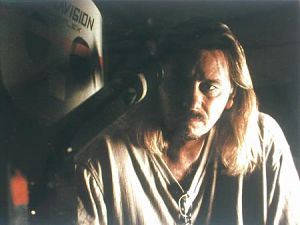 D: Every day you go on a set is a chance to learn something. Every conversation you get involved in there is always going to be a piece of information that you will utilize at some point in your career. Spielberg’s communication with children is unbelievable he’s just like a kid himself. We didn’t see much of Scorsese, he and De Niro would show up do a quick rehearsal and disappear for 6-7 hrs. They were only on set briefly. We called it the ‘get acquainted’ hour. I loved Peckinpah’s slow motion work; he shot it at 96 frames a second never any slower or faster. The reason being, he could optically take frames out and not change the speed. I loved his style and the way he used blood and Squibs. A lot of stuff in my action films, namely ‘Urban Justice’ was heavily influenced by Peckinpah’s classics ‘Pat Garrett and Billy the Kid’ and ‘Cross of Iron’. On that particular film Dickie Beers was my stunt coordinator ad as well as 2nd unit director. I come in with a shot list and I also have a 2nd unit shot list. And I fall them to a ‘T’. Most people say “You won’t be able to get this amount of work done.” I just tell ‘em “Yea I will you just watch!”. After this many years in the business, I know what I can get away with.
D: Every day you go on a set is a chance to learn something. Every conversation you get involved in there is always going to be a piece of information that you will utilize at some point in your career. Spielberg’s communication with children is unbelievable he’s just like a kid himself. We didn’t see much of Scorsese, he and De Niro would show up do a quick rehearsal and disappear for 6-7 hrs. They were only on set briefly. We called it the ‘get acquainted’ hour. I loved Peckinpah’s slow motion work; he shot it at 96 frames a second never any slower or faster. The reason being, he could optically take frames out and not change the speed. I loved his style and the way he used blood and Squibs. A lot of stuff in my action films, namely ‘Urban Justice’ was heavily influenced by Peckinpah’s classics ‘Pat Garrett and Billy the Kid’ and ‘Cross of Iron’. On that particular film Dickie Beers was my stunt coordinator ad as well as 2nd unit director. I come in with a shot list and I also have a 2nd unit shot list. And I fall them to a ‘T’. Most people say “You won’t be able to get this amount of work done.” I just tell ‘em “Yea I will you just watch!”. After this many years in the business, I know what I can get away with.
J: Can you tell us about the rumored 3rd installment in the Jeepers Creepers Franchise?
D: Yes we are going to do Jeepers Creepers 3. But right now it’s tied up because MGM was bought by Overture. They have a new head guy and he’s frozen all projects for 90 days. So I would say sometime before the end of the year, we’ll be starting on that picture. In the meantime though we are going to do a film called ‘Rosewood Lane’. Victor Silva is writing, directing and producing. I’m also producing and additionally serving as a Director of Photography. At this point we’re trying to figure out what budget range we can do it in. There are three at the moment. This will be our fourth collaboration together.
Trevor: Where do you stand in the debate of HD vs Film?
D: My preference is obviously film. I’ve been a ‘Film guy’ for 37 years now. I have shot Hd. I think it’s a great format for TV or stage. But there is a fallacy out there that it’s cheaper to use than film. By the time you go into post-production it’s almost a wash. If you have a solid post-production budget of 300,000-400,000 to get a ‘DI’ (Digital Intermediate), then you can really do something with it. Lighting for HD is a totally different style. It requires more bounce lighting. You can’t clip the highlights or crush the blacks, it’s not possible to go ten (f-stops) over because there isn’t any information there. It would just go ‘white’. Every film that I work on now as either Director or DP, the producers always tell me, “We are going to shot this on HD.” I can shot much faster with film. Shooting on HD requires more lighting, more time to set up lights plus extra man power to move around all the lights. Most producers think you turn on an HD camera and shoot. But their names aren’t going on the film as Director of Photography. There may be a raw image but to me it looks like garbage. The producer I’m working with now claims to have saved 200,000 on a previous picture using HD cameras. They were pushing for us to use it on our new picture ‘Rosewood Lane.’, but I refused. He didn’t show me the budget, but he also couldn’t explain to me, where the savings were. Since this HD revolution film stock (celluloid) has become cheaper. Today you can find good stock for 40cents a foot. Shooting on film is almost totally impossible to screw up, unless you’re shooting with the lens cap on.
J: Your Latest Films Anaconda 3 &4’ were recently released. Any details about the production you can share with us?
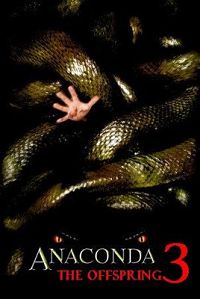 D: The ‘ANACONDA’ films, (parts3&4) were shot back-to-back and it was a rough experience. I have to be honest; I told the producers up front, that those scripts were horrible. They were absolutely awful. But that’s what the producers approved and that’s what I was given to shoot. And I did the best I could do with the material. I suggested that they spend money in the music department and on the CGI. Ultimately they took the cheap way out on both fronts. They brought a special effects guy out from New York to do the graphics. We showed him the locked picture and he told the producers it would take four months to do the CGI, there were 270 effects shots. In the end, the producers gave him 20 days to complete the job. So there you go.
D: The ‘ANACONDA’ films, (parts3&4) were shot back-to-back and it was a rough experience. I have to be honest; I told the producers up front, that those scripts were horrible. They were absolutely awful. But that’s what the producers approved and that’s what I was given to shoot. And I did the best I could do with the material. I suggested that they spend money in the music department and on the CGI. Ultimately they took the cheap way out on both fronts. They brought a special effects guy out from New York to do the graphics. We showed him the locked picture and he told the producers it would take four months to do the CGI, there were 270 effects shots. In the end, the producers gave him 20 days to complete the job. So there you go.
J: The Anaconda itself looks quite effective in close-ups as opposed to the wider shots. Was this done intentionally?
D: Those are the shot that Adam Clark at Trick Digital did. Long before I started shooting, Adam and I had built models and started designing what the snake would look like. So the close-up stuff is very good. Then what happened was Sony came in to the picture. They brought in their own guy and said he was going to do all the digital effects from that point on. They took it out of Adam’s hands. That’s why there are two very different looking Anacondas.
J: Is it easier to shoot a film back-to-back, because the crew is all ready in the moment and everybody has momentum?
D: In theory it is. We shot Part Three in 20 days. Then I had the weekend off and we immediately started Part Four on the following Monday. We shot that picture in 17 days. But in this particular case I wasn’t given the script for 4 until the last week of shooting on 3. I had absolutely no prep time. We literally shot Part Four without a day’s worth of preparation. Despite this I think it’s the better of the two. I feel the cast and story were stronger and by that time the Romanian crew had finally gotten up to my speed. That itself made a huge difference. I was working with a crew that didn’t really understand the language. It was difficult to communicate my directions to the operators; so many times I got behind the camera myself.
J: You’ve worked on many seminal films in the action genre including ‘Terminator 2’. What was it like working with James Cameron?
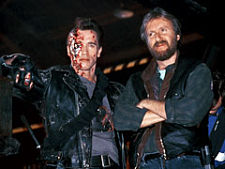 D: I shot 2nd unit on ‘T2’ and we worked side-by-side with James Cameron and the 1st unit. I liked working with Cameron, but he had respect for me because I knew my job. It was people that had a weakness, or weren’t very good at their jobs, he would just annihilate them. I must say though, he’s a brilliant filmmaker. I loved ‘Avatar’! However I don’t feel that a film created in a computer deserves to win an OSCAR for best Cinematography. I think the award should show the talent of the cinematographer’s lighting. I’ll be very honest; I really liked ‘Inglorious Basterds’ and a German film,’ The White Ribbon’.
D: I shot 2nd unit on ‘T2’ and we worked side-by-side with James Cameron and the 1st unit. I liked working with Cameron, but he had respect for me because I knew my job. It was people that had a weakness, or weren’t very good at their jobs, he would just annihilate them. I must say though, he’s a brilliant filmmaker. I loved ‘Avatar’! However I don’t feel that a film created in a computer deserves to win an OSCAR for best Cinematography. I think the award should show the talent of the cinematographer’s lighting. I’ll be very honest; I really liked ‘Inglorious Basterds’ and a German film,’ The White Ribbon’.
T: Is there a difference when working with an experienced director as opposed to a first timer?
D: That depends on the director I’m working with. If it’s an experienced director that has a clear vision and knows what he wants, it becomes collaboration. Several times I’ve worked with first time filmmakers. Usually it’s a writer whose become a director, but doesn’t have any experience of being in the trenches on a film-set. It’s pretty much the same as when I’m directing and DP. I have to get in there and take the bull by the horns. Otherwise we wouldn’t get the day’s work done. Most of these shoots are only 18-20 days and you have a script anywhere from 97-110 pages. So we are shooting 5-6 pages a day, and we still must get the coverage. Working with Victor Silva is fantastic. He storyboards the entire film, shot-by-shot. Before I get on the set I already know exactly what every frame is going to look like. He is that prepared. We have a silent communication with each other, I already know what he wants before he says it. He comes in blocks the scene with the actors, then he turns the set over to me and my crew and I arrange the lighting.
J: Do you prefer to shoot quickly or are you more laid-back when serving as director?
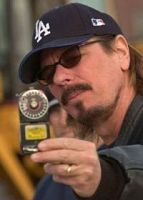 D: When I’m shooting and directing most crews can’t keep up with me. I shoot really fast. I won’t work more than 12 hrs a day and I won’t work 6 day weeks. On my last film we never worked more than 11 1/2 hr day and that included an hour for lunch. And my crew actually turned me in for working them too hard! The reason being one day we managed to get 140 set-ups done. After that the Assistant Camera Operator said he was too exhausted mentally and physically to continue. I was shocked but like I said, most crews can’t keep up with me.
D: When I’m shooting and directing most crews can’t keep up with me. I shoot really fast. I won’t work more than 12 hrs a day and I won’t work 6 day weeks. On my last film we never worked more than 11 1/2 hr day and that included an hour for lunch. And my crew actually turned me in for working them too hard! The reason being one day we managed to get 140 set-ups done. After that the Assistant Camera Operator said he was too exhausted mentally and physically to continue. I was shocked but like I said, most crews can’t keep up with me.
T: In a two year period you collaborated with Steven Seagal on three films. Can you tell us about your working relationship with Seagal?
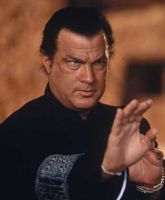 D: We had a really good working relationship; he and I just respect each other. We haven’t worked together since ‘Urban Justice’, back in 2007. He recently asked me to do one of his films, but I wasn’t available. We got on very well. However ‘Urban Justice’ was an extremly difficult shoot. Seagal doesn’t like to be on set more than 3 hrs a day and on that particular picture he had to be there a lot. The script had 119 scenes and Steven was in 109. This wasn’t a buddy picture; he had to carry that film alone.
D: We had a really good working relationship; he and I just respect each other. We haven’t worked together since ‘Urban Justice’, back in 2007. He recently asked me to do one of his films, but I wasn’t available. We got on very well. However ‘Urban Justice’ was an extremly difficult shoot. Seagal doesn’t like to be on set more than 3 hrs a day and on that particular picture he had to be there a lot. The script had 119 scenes and Steven was in 109. This wasn’t a buddy picture; he had to carry that film alone.
J: In your film ‘Mercenary for Justice’, there is an extended battle in the opening twenty minutes. It’s reminiscent of the style used in Black Hawk Down’. How were you able to create such an exciting sequence?
D: That opening sequence was a lot of fun. We shot that on location in South Africa. During Pre-production I sat down with the entire camera crew (four units), we watched ‘Black Hawk Down’ and the beach landing in ‘Saving Private Ryan’. As a group we combed over every frame of those sequences, I image we watched them almost 20 times. So ultimately I designed our opening in the same vein, by using a lot of hand-held cameras and 45 degree shutters. It was a decision I made early on, the idea was to open the film with a battle to grab people’s attention and bring them into the film. Unfortunately during that time Seagal and the producers were locked in a lawsuit, we had four different writers and nobody was talking to one another. Seagal did his version of the script and the producers did theirs. That’s why the story is pretty weak in that film. But man I had a good time shooting that opening, it was like playing ‘Army’ everyday.
T: Much has been written about the production of the film ‘Lightspeed’. There have been complaints of non-payment lodged against the producers. Do you recall your experiences on that film?
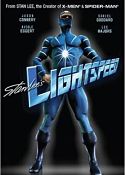 D: We shot that film in Utah. The executive producer Jeff Franklin didn’t pay the crew, he didn’t pay the vendors. The stuntman, who lit himself on fire, still hasn’t been paid. The last day of shooting, he skipped town and the only reason we finished the film was because the crew respected me. I came up through the ranks; I know how vital it is to take care of the crew. They are the backbone of the film. By the end of production I was lighting, gaffing, directing and operating the camera. But hey, we got it done.
D: We shot that film in Utah. The executive producer Jeff Franklin didn’t pay the crew, he didn’t pay the vendors. The stuntman, who lit himself on fire, still hasn’t been paid. The last day of shooting, he skipped town and the only reason we finished the film was because the crew respected me. I came up through the ranks; I know how vital it is to take care of the crew. They are the backbone of the film. By the end of production I was lighting, gaffing, directing and operating the camera. But hey, we got it done.
J: Any future projects that you’re working on?
D: My next film is a physiological thriller titled ‘Rosewood Lane’. It’s written by Victor Silva. He also wrote a script for me called ‘Haunted’, it’s an excellent script. I plan on directing, I’m very excited about it. It’s the first script I’ve been given to direct that is actually well-written. The story is good the characters are well drawn. I’m also attached to direct a $12 million dollar studio film named ‘Stained Glass Windows’. It’s a true story based on a murder that occurred in NY during the early 90’s. There is a lot going on right now. It’s going to be a busy year!

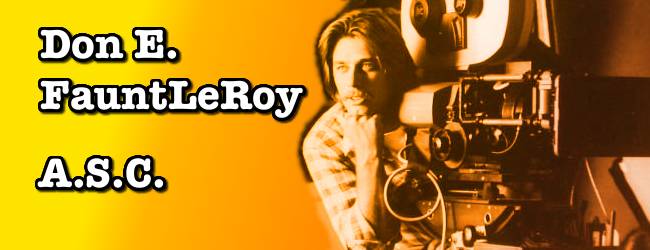
Great interview. Glad to read about something about this guy.
good director, love his work, i hope he doesn’t quit this job very soon